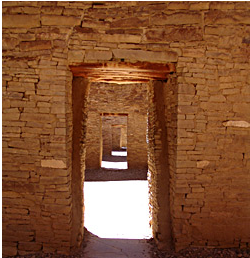Publication Date
5-1-2012
Abstract
Geospatial modeling of ancient landscapes for predictive scientific research and hypothesis testing is an important emerging approach in contemporary archaeology. This doctoral dissertation is comprised of three published North American case studies that clearly demonstrate the value of predictive geospatial modeling to address explicit goals of contemporary archaeological research, conservation and cultural resource management. The case studies consist of a GIS-based prioritization analysis of natural and cultural resources conservation value in the Galisteo Basin of north-central New Mexico, an archaeological sensitivity analysis (site-discovery potential) for the state of Vermont, and a predictive model of agricultural potential during the Bonito Phase (ca. AD 850 to 1150) in Chaco Canyon, New Mexico. These studies contribute to the growing reliance on quantitative geospatial modeling in the social sciences.
Keywords
GIS, Geospatial, Archaeology, Predicitive Modeling, Vermont, Galisteo Basin, Chaco Canyon, LiDAR, suitability, prehistoric agriculture
Project Sponsors
National Center for Airborne Laser Mapping (National Science Foundation)
Document Type
Dissertation
Language
English
Degree Name
Anthropology
Level of Degree
Doctoral
Department Name
Anthropology
First Committee Member (Chair)
Wirt H. Wills
Second Committee Member
Patricia L. Crown
Third Committee Member
Keith Prufer
Fourth Committee Member
Timothy Wawrzyniec
Recommended Citation
Dorshow, Wetherbee Bryan. "Predictive Geospatial Modeling for Archaeological Research and Conservation: Case Studies from the Galisteo Basin, Vermont and Chaco Canyon." (2012). https://digitalrepository.unm.edu/anth_etds/18

